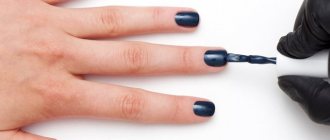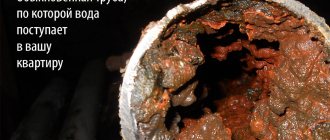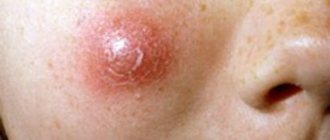Mechanism of boil maturation
When exposed to favorable conditions for development, the pathogen begins active reproduction, gradually turning into pathogenic. Exposure to external and internal factors triggers the maturation mechanism.
Maturation of the boil for external reasons:
- lack of hygiene;
- damage to the integrity of the skin - injuries, cuts (wounds during shaving), nail scratching, tight clothing that causes irritation, chafing;
- poor nutrition;
- sudden changes in temperature (hypothermia or overheating of the body).
Chiryak ripening for internal reasons:
- weak immune system;
- excessive sweating or improper functioning of the sebaceous glands;
- improper functioning of metabolic processes;
- unhealthy lifestyle, drinking alcohol, smoking;
- the presence of diseases caused by infection.
How else can you treat an opened boil?
If the formation is on the face, nose or ear, then antibiotic ointments are used. Recommended for people with weakened immune systems and for recurrent furunculosis. Application:
- the purulent surface is treated with an antiseptic solution;
- antibiotic ointment is applied.
READ ALSO: Herpes type 6 in children, diagnosis and treatment of the disease
There is a wide choice, the most commonly used are:
- Levomekol.
- Oflocaine.
Levomekol destroys germs and cleanses pus. Has anti-inflammatory, healing and antibacterial effects. Tissues are restored quickly. A sterile gauze bandage is soaked in ointment and applied to the affected area. A new dressing is done every day.
Oflokain destroys germs, resists pain and swelling. Contains lidocaine, which prevents bacteria from multiplying and relieves pain.
Stages of maturation
The boil appears quickly, how long it takes to mature is determined by actions to accelerate the ripening process. The passage of three stages of development remains inevitable:
| The first stage is the formation of infiltrate | An infection penetrates the skin and a painful red lump appears. When pressed, pain, itching, and pulsation are felt. Within two days the inflammatory process spreads. |
| The second stage is the formation of an abscess | Closer to the fourth day, the tumor becomes softer, and a purulent core begins to form. After the first signs appear, the contents form a mature, festering head. |
| The third stage is interruption, prolongation of the chiryak | On the seventh to tenth day, due to the large amount of accumulated pus, pressure occurs on the upper tissues (tire), and the abscess breaks. The purulent contents come out, exposing the rod inside. There is no need to try to squeeze out the pus; intact tissues will reject it on their own within 24-48 hours. The healing process of the formed scar is underway. |
To relieve pain and eliminate discomfort, you can help yourself with the help of medications or traditional medicine, accelerating the stages of development of chiryak.
Summarizing
After we have dealt with the main stages of the ripening of boils, it remains to understand what the danger is of opening an immature abscess on your own. Some patients try to squeeze out the annoying pimple to speed up the maturation process.
It is strictly not recommended to do this - having broken through, the pus will fall on the surrounding tissues and into the bloodstream. Self-medication in this case threatens necrosis of surrounding tissues and blood sepsis. Without timely treatment, sepsis will lead to the death of the patient.
How dangerous is treatment at home? A ripening boil can burst both outward and inward. The opened abscess will begin to slowly melt the necrotic core, simultaneously melting the adjacent tissues. What should be done in this case? Urgently seek help from your local clinic.
Standard ripening is when the rod comes out of the opened boil and does not decompose inside the dermis. Specialists should deal with this problem, even if we are talking about boils in the buttock area. A boil can develop in any area except the palms and soles - there are no hair follicles there.
Did you know that Staphylococcus aureus normally lives quietly on the surface of the skin of all people? Only if the skin is damaged and gets into the wound, vigorous activity begins, followed by reproduction and spread.
Danger and features of a mature boil
Chiri can pop up anywhere, the main condition is the presence of hair. Depending on their location, chirps pose a danger:
- Boils in the facial area are of great danger: on the forehead, under the hair on the head, in the nose, in the ear. There is a risk of infection spreading through the blood and lymphatic vessels to the brain. Such complications are caused by meningitis, encephalitis, blood sinus thrombosis, acute thrombophlebitis, sepsis, and lymphadenitis. As soon as an abscess appears on the head, you should immediately consult a doctor; treatment should take place in a hospital.
- Carbuncles appear more often on the neck. It can be identified by the accumulation of several dense nodes, gradually developing into one, with many purulent heads. The disease cannot be treated at home; you must visit a specialist.
- The appearance in the intimate area is considered dangerous, the treatment of which should not be delayed. This has serious consequences for men and women. Chiryak is often found in the groin area in men and on the labia in women. Wearing tight clothes and poor hygiene cause irritation of the soft skin of the intimate area and, as a result, purulent inflammation.
- A boil on the butt brings a lot of inconvenience and is painful. If a small abscess appears on the buttock, you can treat it at home; if it enlarges or takes more than four days to mature, consult a doctor immediately. A chiryak on the tailbone is of great danger; there are many nerve endings here. Treat it only under the supervision of a doctor.
- Chiryaki on the arms, legs and stomach are the least dangerous; do not forget about the stages of development and maturation. At first glance, a pimple may look harmless, but it may not mature or begin to develop inward. Carefully monitor the development of the boil.
READ ALSO: Rash during teething in a child: photos of rashes, Komarovsky’s opinion
The use of warming procedures during the ripening stage can cause a large-scale spread of pathogenic bacteria. The result will be a closed boil that will burst not outward, but inside the skin tissue, which will cause serious complications.
Surgical intervention
If a woman (man) realizes that the abscess will not open on its own, it is necessary to urgently consult a doctor - a deep subcutaneous abscess requires surgical intervention. Otherwise, the boil can break into the anatomical cavities, and this is fraught with complications including sepsis.
Surgical treatment is performed under anesthesia, most often local anesthesia is used. The boil is opened and drained, completely removing all purulent contents. Next, the wound is disinfected and stitches are applied if necessary. The patient should remain in the hospital under the supervision of a doctor for several days after the intervention.
In the postoperative period, the patient undergoes antibacterial therapy with local or systemic drugs. For better healing and to prevent further relapses, it is recommended to undergo a course of physical treatment.
Please understand that self-medication can be dangerous, so consult your doctor first before doing anything.
The resulting acute inflammatory process affecting the hair follicle, sebaceous gland and connective tissue is called a boil. The main source of the disease is considered to be Staphylococcus aureus.
The causes of inflammation can be both disorders of the autoimmune system and a number of diseases that precede the development of the process:
- colds;
- a history of diabetes mellitus;
- mechanical damage to tissues - cuts, scratches;
- low levels of vitamins;
- metabolic disorders;
- incorrect diet.
How many days does it take for a boil to mature? The estimated time is about a week, from the moment of infection to the beginning of the separation of purulent contents. The complete healing process takes place over a period of about 2 weeks. If the boil does not go away for more than 10 days, you need to seek medical help.
What can I do to make the abscess break faster? In order for the boil to ripen faster, without taking a long period, different types of therapies will help speed up the process. If the allotted time has passed and the boil does not open, you need the help of a surgeon.
How to understand that a boil is going away
You can understand that the chiryak is passing by the following signs:
- swelling decreases and swelling softens. If the pus has not yet completely come out, then a slight compaction can be felt;
- A purulent core should pop out of the wound, the contents should be yellow or greenish in color. After the pus is released, a scar hole appears, which closes after a couple of days, with proper treatment;
- after removing the suppuration, liquid ichor without purulent impurities oozes from the wound;
- 2-3 days after opening the boil, swelling and redness decrease, and pain disappears when treating the wound.
You can determine that the chiryak has passed by the scar left behind. You can speed up the healing period by using ointments to treat the wound.
Folk remedies
Alternative medicines have the same properties as medications; consult your doctor before using them.
- Apply the pulp of an aloe leaf cut lengthwise directly to the abscess, secure the compress with a bandage. Replace every 8 hours.
- Onion will help remove the purulent exudate; boil it in milk until softened, grind it into a paste and apply it to the boil under a bandage.
- The process of ripening and healing will go faster if you use this remedy - mix raw yolk with salt and honey (5 grams each), add flour to the mass and knead a soft dough. Form into a cake and place on top of the boil daily.
- You can apply slightly broken cabbage leaves to the site of the future abscess, fix the Kalanchoe on top with a bandage and leave overnight.
- Make compresses - dissolve a teaspoon of salt in a glass of hot water, soak a cloth in it and apply to the affected area.
You can treat the maturing infiltrate with antiseptic solutions (fucorcin, iodine, camphor alcohol).
Do not try to open or squeeze out the boil - the boil must go through all stages of its development, after which it will clear itself. Also, do not self-medicate with multiple skin lesions (furunculosis) - such a pathology requires proper antibacterial therapy.
If the boil cannot break through for a long time, and the painful symptoms are accompanied by an increase in body temperature, be sure to go to the doctor, most likely this will require surgical intervention followed by antibiotic therapy.










